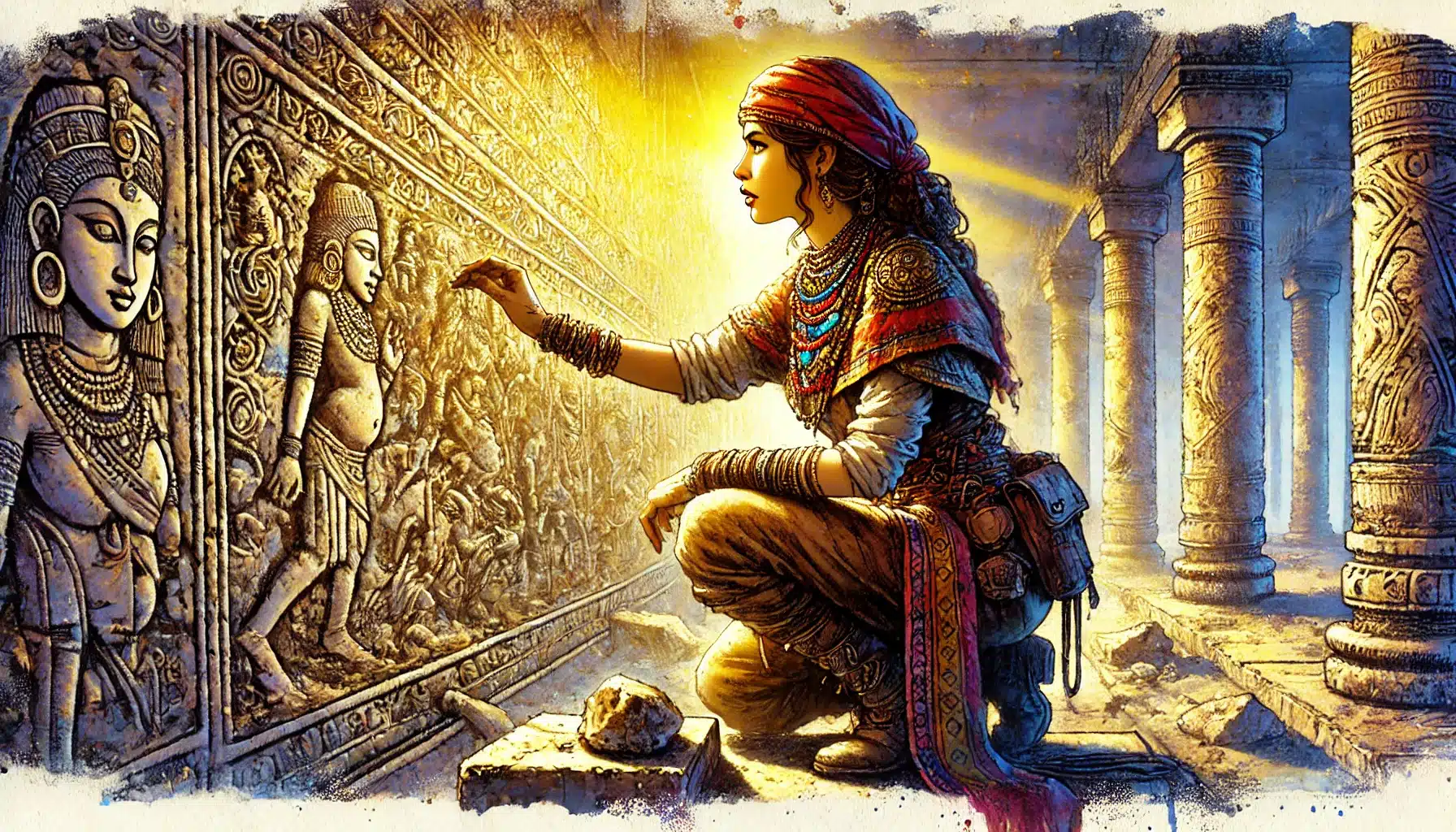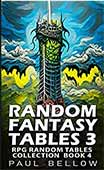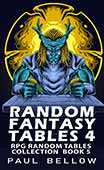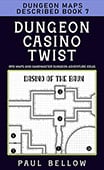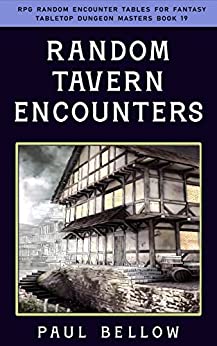Most dungeon masters begin their campaign planning with broad strokes: a hastily-sketched map, a handful of place names, a city built here, a forest there. Yet, as sessions unfurl and adventurers tread further from familiar towns, even the most beautifully rendered geographies can feel like backdrops unless underpinned by deeper, more immersive worldbuilding. The terrain may be dotted with castles and cursed ruins, but what springs those places to life? The answer is culture—layered, breathing, and tangled in history.
Every campaign world can offer a menu of towns and proper nouns, but what separates a memorable setting from a forgettable backdrop is the texture of its people. It’s not just the presence of a temple or a local tradition—it’s how rituals, beliefs, and customs shape daily rhythms and color every interaction. Intricate cultures and well-woven histories build connections: players find themselves invested not simply in their own destinies, but in the fate of the world around them.
Basic setting flavor—“the orcish tribes are aggressive,” “the elves love beauty”—quickly withers under scrutiny. True advanced worldbuilding goes beyond simple descriptors or one-note identities. It’s about layers: how old grievances bleed into new alliances, how ancient myths morph into modern taboos, how the echoes of a civil war can still be heard in an accent or a law. When you let your world evolve alongside your campaign, it becomes as alive and unpredictable as your players’ stories.
Don’t approach “advanced” D&D worldbuilding as a burden of encyclopedic complexity. Think of it as opportunity: chance after chance to plant seeds for future plotlines, to breathe life into character arcs, and to tempt players into engagement beyond quests and gold. A world dense with living culture doesn’t confuse; it entices and rewards curiosity. It gives every corner a chance to be the start of something legendary. This is where AI RPG fantasy tools can really help!
This guide is for the DM who craves more than stat blocks and surface details. If you want your setting to pulse with layered tradition, to challenge players with nuance, and to sustain campaigns that feel both fantastical and true, you’re on the right page. Get ready to deepen your craft—your next unforgettable culture awaits.
Understanding Cultural Identity in Fantasy
Start with the question: what makes a culture truly distinct? It isn’t just the clothes on their backs or the words on their lips. Authentic cultures have a felt texture—woven from language, core values, unspoken norms, visible taboos, aesthetics, myths, and those fascinating internal contradictions that define any real society. Think of the difference between a rote stereotype and a community that feels lived-in. The latter breathes, shifts, and even wrestles with its own ideals.
Try my AI Tabletop RPG generators...and an extensive library of content!
Believable cultures are rarely, if ever, tidy. Their traditions have depth and sometimes fractious roots. The pride of a warrior caste may conceal fears of becoming irrelevant in peacetime. Artisans might honor meticulous craftsmanship, even while exploiting loopholes in commercial law. Their language holds both history and humor—slang that could be a badge of belonging or a boundary line. These contradictions don’t weaken the world; they give it resonance.
Geography, history, and politics are crucibles for worldview. A culture hemmed in by mountains will revere endurance or cunning differently from those who thrive on open plains. A city sacked by foreign powers may pivot from isolation to cosmopolitanism over generations. Political pressures forge new rituals or laws as a response to crisis and opportunity. No practice or rule exists in a vacuum.
Drawing on the real world for inspiration isn’t lazy. It’s wise, especially when you transform the familiar: take a recognizable concept and twist it with fantasy logic. A coming-of-age trial might involve speaking to ancestors through magical storms. Hospitality rituals could require guests to recite memories at the hearth’s flame. These tangible, imaginative flourishes keep your setting feeling at once plausible and thrillingly new.
20+ Elements That Define a Culture’s Identity:
- Justice systems
- Hospitality rituals
- Coming-of-age traditions
- Gender roles and expectations
- Food customs and staple ingredients
- Color symbolism and fashion
- Taboos and forbidden acts
- Rituals for birth, marriage, and death
- Sports, games, and competitions
- Artistic styles (music, sculpture, poetry)
- Education and apprenticeship methods
- Body modification and adornment norms
- Public vs private behavior codes
- Seasonal holidays and observances
- Forms of greeting and farewell
- Methods of conflict resolution
- Beliefs about luck and fate
- Architecture and interior design
- Attitudes toward outsiders and strangers
- Ancestor or hero reverence
- Animal symbolism and totemic beliefs
- Rules for storytelling and oral history
- Superstitions and omens
A vital truth: culture is never static, nor a flat monolith. Traditions shift, younger generations rebel, foreign influences creep in. Let your societies be dynamic: debate happens, schisms develop, reformers push for change while elders defend the old ways.
⚔️ Fantasy RPG Random Tables Books
Make life as a Gamemaster easier…
If you play Dungeons & Dragons, Pathfinder, or other fantasy RPGs, this
RPG random tables series
is packed with encounters, NPCs, treasure, and more. Available in eBook or print—either way, you’ll have a wealth of adventure ideas at your fingertips.
Remember—building inward diversity strengthens realism. Not every member of a society must adhere to every rule. Friction, dissent, and regional twists add texture your players will love to explore.

Designing Mythology, Religion, and Belief Systems
Shared beliefs have the power to unite sprawling nations or to fracture them into bitter rivals. A well-crafted religion plants seeds that flower in every institution, from politics to playgrounds. Consider the palette available: pantheons with bickering gods, animist worlds speaking to stones and streams, ancestor-glorifying cultures seeking wisdom from the dead, or even fiercely rational societies that reject the supernatural outright.
These belief systems reverberate through lawmaking, art, and the bones of the city itself. A theocracy might sculpt temples from living stone, organize society by divine roles, or send armies to convert the faithless. Holidays celebrate mythic events or cosmic cycles. A single sacred text can inspire both crusaders and secret heretics; a legendary hero becomes the yardstick for every new deed.
The stories your world tells itself—its origin myths, creation stories, apocalyptic warnings—color every aspect of your campaign. A faith that imagines the world birthed from the dream of a sleeping serpent will view dreams, death, and destiny far differently from a culture founded on solar order or the memory of divine ancestors. Sacred colors, forbidden fruits, ritual dances, pilgrimages—all these details make faith lived-in.
Inventing doctrine and legend isn’t just icing. Let belief drive character, plot, and even conflict between party members. A cleric’s doubts, a paladin’s crisis of conscience, a scholar’s hunt for lost scripture—these are plot hooks that grow from living faith, not flavor text.
15+ Elements of a Fantasy Belief System:
- Pilgrimage routes or sacred journeys
- Divine trials and tests of faith
- Competing or contradictory creation myths
- Sacred colors, numbers, or metals
- Heresies and forbidden practices
- Deity animal forms or divine avatars
- Prophecies and apocalypse predictions
- Ritual fasting or feast days
- Hierarchical priesthoods or wandering shamans
- Rite of exorcism or cleansing
- Oracles and methods of divination
- Sacred relics and their histories
- Daily prayers or recitations
- Mortal champions or saintly heroes
- Tombs, reliquaries, and sacred sites
- Doctrine on the soul’s journey after death
- Taboos around certain professions or objects
Faith should have muscle. Let the actions of believers and non-believers shape the bones of your campaign. Laws bend to holy writ, holidays upend city life, and fanaticism sparks both miracles and tragedy.
Never allow belief to float as mere decoration—anchor it in daily life. NPCs should hold convictions that inform their choices, factions might clash over doctrine, and the gods (if present) might just be active and unpredictable.
Creating Historical Depth and Timeline Anchors
The secret to a world that feels ancient: history with consequences. It’s not just a catalogue of kings and fallen empires; it’s a living web of cause and effect that anchors your cultures. Start with “big anchor events”—world-shaking wars, migrations across continents, the invention of magic or lost technology, plagues that scar land and memory, or acts of the gods themselves. These events create ripples that reach through languages, borders, and family lines.
Consider how these major moments change everything. A migration might leave linguistic traces—loanwords and hybrid dialects. The wounds of a decades-old rebellion may linger in coats of arms, tavern songs, or the ruins atop every hill. Geography is redrawn: rivers redirected, new borders negotiated, towns founded by refugees. Political factions emerge and splinter, sometimes violently, across generations.
Faction schisms are goldmines. A single event—say, the Betrayal of the Sky King—might create two opposed noble houses that shape centuries of intrigue. Divine interventions or technological leaps can trigger a golden age, followed by a cataclysmic fall. Remember: time is a river, and every dam, flood, or drought redirects its flow.
Never worry about writing a complete “history book.” Instead, plant timeline anchors—events so memorable and well-known within the world that everyone references them. These allow you to improvise. If you know the land was once ruled by the Clock Court, a new plotline springing up around old court secrets or forbidden time-magic feels logical and satisfying.
⚔️ Fantasy RPG Random Tables Books
Make life as a Gamemaster easier…
If you play Dungeons & Dragons, Pathfinder, or other fantasy RPGs, this
RPG random tables series
is packed with encounters, NPCs, treasure, and more. Available in eBook or print—either way, you’ll have a wealth of adventure ideas at your fingertips.
Key events become guideposts, not railroad tracks. The tension between the official record and folk memory opens endless creative doors. Heroes grow into legends; disasters become moral lessons or even holidays.
20+ Timeline Anchor Ideas:
- The Year Without Sun
- The Betrayal of the Sky King
- The Founding of the Clock Court
- The Scouring of the Old East
- The Plague of Dreaming Eyes
- The Pact at Redfen Moor
- The Drought of Five Kings
- The Ascension of the Stone Prophet
- The Flooding of the Shallow Coast
- The Last Duel of the Bone Knights
- The First Arrival of the Iron Ships
- The Night of the Glass Stars
- The Taming of Wild Magic
- The Fracture of the Obsidian Accord
- The Mourning Bells’ Rebellion
- The Massacre at Brightgate
- The Cleansing of the Sky Temples
- The Treaty of Seven Flames
- The Uprising of the Masked Children
- The Lost Winter
- The Liberation of the Moon Wards
- The Collapse of the Song Towers
No need to build exhaustive, year-by-year timelines. Focus on these landmark events and a loose scaffold of dates. This gives room for both player action and future improvisation—your history can grow as your stories do.
Flexibility is key. World history should be a living document, open to reinterpretation, rediscovery, and even contradiction as campaigns progress. Leave space for mysteries, disputed accounts, and the ever-present possibility of the past returning to haunt the present.
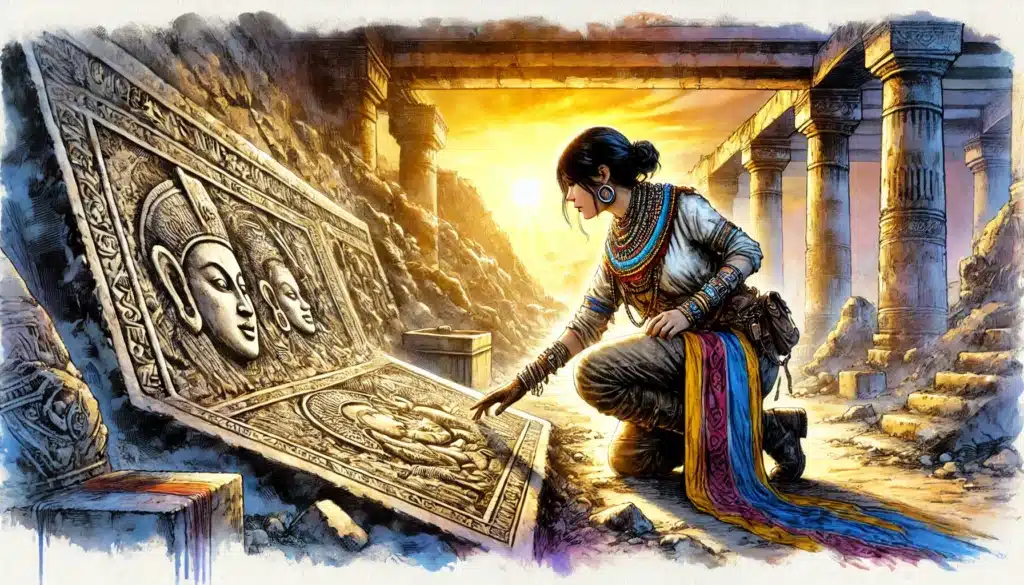
Developing Languages, Dialects, and Naming Conventions
Language is one of the subtlest, most powerful tools for forging cultural authenticity. A single invented phrase, proverb, or naming convention can make a new society feel real. Don’t just build languages as background noise—let them color interaction, shape thinking, and mark identity.
Consider the spectrum: formal speech reserved for court and ritual, roughspoken dialects by river traders, borrowed words that betray centuries of conquest or trade. Slang and idioms carry hidden history. Are there “taboo” words? Is there a split between how the old speak and how the young rebel? Even borrowed terms from other cultures (or planes) add layers.
Naming conventions do heavy lifting. A society might name children after verbs (“Runs-Fast,” “Calms-Storm”) or generations (“Third-Born”), use elaborate honorifics, or ban the written form of divine names. Consistency matters more than gimmickry—using repeated root words, preferred phonemes, or suffixes builds cohesion.
Remember: you don’t have to build a whole conlang. A handful of words, phrases, or patterns carries enormous weight. Choose details that reinforce cultural nuance—how names are bestowed, who may speak which dialect, or why certain written scripts are lost or forbidden.
15+ Linguistic Worldbuilding Ideas:
- People named after verbs or actions
- Taboo on writing or speaking divine names
- Trade pidgin bridging several cultures
- Lost alphabets or scripts known only to priests
- Language spoken only in dreams or in trance
- Seasonal dialect shifts (different vocab in winter/summer)
- Language with genderless pronouns as default
- Formal address reserved for elders and ancestors
- Politeness rituals embedded in every greeting
- Curse words derived from magical mishaps
- Naming traditions of adding parents’ or mentors’ names
- Gesture-based languages (sign, dance, hand-chants)
- Forbidden words or topics (e.g., death never mentioned)
- Naming based on time of birth or astrology
- Rhyme-based communication among street urchins
- Written contracts in pictograms
- Song as a primary form of legal or historical record
Every invented word or unique naming habit is a thread. Tug on it, and you unravel hidden stories, jokes, and prejudices. Let language shape how knowledge is preserved, secrets are kept, and who is considered an “insider.”
Never underestimate the power of a single phrase. Even casual “street talk” or honorifics will anchor players in your world and show them—not tell them—what matters most to its people.
Politics, Power, and Law
Power does not exist in a vacuum. The shape of your world’s politics—who rules, who follows, who is forgotten—sets the table for conflict, intrigue, and rebellion. Don’t settle for stock monarchies or faceless republics. Paint a spectrum: tribal councils, feudal vassals, feuding merchant princes, theocracies, anarchist collectives, or city-states run by guilds.
Examine the lifeblood of governance: how is power won, lost, and legitimized? Is leadership passed through bloodline, divine omen, competitive trials, or rotating consent of the people? Does the law enshrine a notion of fairness, loyalty, purity, or collective survival? Systems of justice reveal values: does a wronged party seek reparation, challenge to a duel, or await the verdict of a magic-blessed oracle?
The specifics of succession, election, and civic duty vary widely. Some societies demand oaths or contracts; others see loyalty as inherited rather than earned. Is citizenship a right, a burden, or a prize? How is dissent handled—through open debate, secret police, or ritualized argument?
Law is often personal. Envision systems where justice is settled in song contests, or where only certain castes can appeal verdicts. Perhaps, all crimes are cleansed by public confession, or balances of blood-debt. And always, lurking at the edges, is the threat of corruption, usurpation, or popular revolt.
18+ Government and Law System Ideas:
- Trial by song or storytelling
- Rotating monarchy (each major family rules a year)
- Election by lottery (leaders drawn at random)
- Oath-bound councils (leadership changes when oath ends)
- Caste-based voting rights
- Blood-debt enforcement (families must repay in kind)
- Arbiter duels (law settled by combat, wit, or debate)
- City governed by trade guild heads
- Ruler chosen via prophecy or omen
- Theocracy (priests as rulers, or divine “channels”)
- Restorative justice (offenders must repair harm directly)
- Mob law (justice dispensed by popular vote or vigilante action)
- Rule by ancient contract or magical pact
- Power transferred by ritual adoption/“blood brotherhood”
- Legal dueling societies (licensed enforcers)
- Requirement for acts of public service to gain citizenship
- Exile or shunning as primary punishment
- Grand judges traveling from town to town
Let every power structure spark stories. Corruption breeds resistance. Unjust laws create rebels and folk heroes. When players challenge the system—by accident or design—the real history of your world is written.
Remember, the rules and institutions of power aren’t just backdrop; they are engines for plot and player agency. The chance to change the world, or be changed by it, sits always at your table.
Social Stratification and Cultural Conflict
The social ladder is often anything but straight. Societies divide themselves by class, caste, birth, achievement, or even superstition. There is power in privilege—which means tension everywhere. The gap between rural and urban, noble-blooded and commoner, native-born and immigrant, or old and new money is fodder for strife, alliances, and opportunity.
Privilege can be glaringly obvious or insidiously subtle. Laws may protect only the landed gentry. A silver tattoo might open—or close—any door. Social mobility might be a distant dream or a hard-fought reward. Prejudice infects speech, custom, and even architecture: exclusive neighborhoods, forbidden foods, or ritual seating arrangements. The struggle for advancement or acceptance becomes both personal and societal tale.
These fault lines offer just as much fuel for adventure as monstrous threats. Perhaps players must navigate a system of secret patronage, confront ingrained bigotry, or fight a corrupt elite. Or maybe they befriend an underdog outcaste who leads a rebellion or reveals hidden lore. DM, consider how class impacts safety, education, and even the ability to question tradition.
Try my AI Tabletop RPG generators...and an extensive library of content!
Conflicts here are not just for background—they become quests, character arcs, and wrenching moral dilemmas. An arranged marriage can spark a factional war. A festival might be a tinderbox of protest. Even small acts, such as breaking a taboo, can upend the lives of both local NPCs and the player characters who walk among them.
| Dominant Class | Cultural Values | Privileges | Social Taboos |
|---|---|---|---|
| Scholar Caste | Knowledge = virtue | Education, tax immunity | Public dancing |
| Warrior Nobility | Honor, loyalty | Right to bear arms, land grants | Cowardice, critique of elders |
| Merchant Princes | Wealth, negotiation skill | Import monopolies, legal immunity | Accusing others of theft |
| Rural Peasantry | Family, tradition | Communal lands, festival rights | Wearing shoes indoors |
| Artisan Guilds | Craft, reputation | Control of trade, guild halls | Plagiarizing designs |
| Priesthood | Piety, purity | Legal protection, feast seats | Eating forbidden foods |
| Immigrant Traders | Adaptability, secrecy | Dual citizenship, caravan escorts | Marrying locals without rites |
| Arcane Elite | Mastery of magic | Magical duels, library access | Revealing spell secrets |
| Performing Underclass | Joy, subversion | Street performance permits | Mocking nobility |
| Nomadic Clans | Freedom, resourcefulness | Roaming rights, market stalls | Permanent city residency |
Within every society, not all accept the rules. Doubt, defiance, and negotiation abound. Often, belief in the system changes depending on who you ask—or which day you ask them. Class and caste aren’t static; sometimes, revolution or reform upends the landscape entirely.
Remember: cultural conflict is the engine that keeps a society evolving. Give players a world where everybody, not just the powerful, is striving for something more.

Everyday Life and Cultural Detail
It’s tempting to focus only on the grand scale, but the soul of your setting lives in everyday details. How people sleep, eat, greet, dress, and mourn say as much about history as any monument ever could. Tiny choices—house shape, food flavoring, a parlor game—become touchstones for players, inviting them to breathe in your fantasy world like air.
Housing reveals adaptation: tiered rooftops for monsoon climates, burrowed homes heated by volcanic vents, tents that unfold into windbreaks. Clothing and body art announce status, profession, or belief (tapestries of tattoos, feathered epaulets, woven dye patterns). Education might involve oral storytelling circles, glyph-inscribed cave walls, or training by masked mentors.
⚔️ Fantasy RPG Random Tables Books
Make life as a Gamemaster easier…
If you play Dungeons & Dragons, Pathfinder, or other fantasy RPGs, this
RPG random tables series
is packed with encounters, NPCs, treasure, and more. Available in eBook or print—either way, you’ll have a wealth of adventure ideas at your fingertips.
Consider daily hygiene: does everyone bathe in rivers, smudge each other with sacred smoke, or anoint the body with flower oils? Gestures matter—a bow, a clap, a finger brushed across the brow could all signal respect or insult. Timekeeping and calendars: marked by sun, moon, or tides, by bells, shadows, or the migration of star-herons.
Mundane detail grounds the fantastical. Let players taste strange bread, hear dawn market calls, or fumble a greeting in the local style. Emotional expression—riotous public weeping, strict stoicism, laughter as defiance—speaks volumes about shared values and private fears.
25+ Everyday Life and Aesthetic Elements:
- Bathing in flower smoke or sacred pools
- Tiered rooftop homes for shared families
- Generational tattoos marking major life events
- Clapping or stomping as polite greeting
- Public storytelling squares and speaker’s stones
- Eating with communal wooden spoons
- Sleep cycles dictated by moon phases or bells
- Ceremonial braiding of hair before major events
- Seasonal shedding or donning of specific colors
- Ancestral masks displayed in every household
- Song duels to settle minor disputes
- Personal shrines in bedrooms
- Rain-collecting cisterns as family status symbols
- Ritual silence at dawn or dusk
- Kites flown to ward off misfortune
- Decorative paint on livestock for festivals
- Trade beads as currency and recordkeeping
- Shadow puppetry as news and satire
- Public baths that double as meeting spaces
- Food thickened with special local flour
- Literacy tattoos signaling completed apprenticeship
- Pacts sealed with shared drink or smoke
- Garden shrines to household spirits
- Farewell rituals involving pebble tossing in rivers
- Luckbringers: objects carried to avert disaster
- Hushed voice required in sacred spaces
Don’t neglect the mundane. Games, chores, and ordinary rituals are what make your world tactile. They let players imagine not only what’s new or dangerous, but what’s deeply familiar—what might be missed if lost.
Ground your epic lore in the stuff of daily survival, joy, and sorrow. Let your world be somewhere that can be smelt, touched, tasted, lived in.
Cultural Exchange, Migration, and Hybrid Societies
No culture exists in perfect, hermetic isolation. Trade, war, migration, and diplomacy drag customs across borders, merging and transforming them. Hybrid societies are fertile ground for stories: they’re living laboratories where fusion traditions arise, languages meld, and even religious beliefs grow in wild, unpredictable branches.
The signs of exchange are everywhere. Dual-name systems mark both old and new identity. Fusion food—half remembered, half invented—is served with equal pride and uncertainty. Creole religions mix gods and rites, sometimes sparking controversy or new celebrations. Bilingualism or even multilingualism is common, with loanwords and accent marks everywhere.
Don’t neglect the shadow side: old-guard prejudice, generational trauma, xenophobia, and secret societies. Memory of forced migration, refugee camps, or diplomatic betrayal can shape identity as strongly as pride in new synthesis. Tracing cultural borrowing yields instant plot hooks: why do these city gates feature nomadic tent motifs? Why do two solstice feasts converge on magical fire?
Even within single cities, microcultures breed. Children of outsiders invent street slang; half-remembered myths weave into local festivals; arguments rage over what “purity” means. Each hybrid enclave is a story ready to be explored.
20+ Hybrid and Fusion Culture Details:
- Fire festivals merging solstice traditions of two peoples
- Dual-name systems: birth name and name earned in new land
- Architecture blending nomadic tents with stonework
- Prayers recited in two languages, alternating stanzas
- Votes requiring both native and immigrant approval
- Traditional songs adapted with foreign instruments
- Shared market districts with parallel currencies
- Mixed wedding rituals honoring both ancestries
- Fashion fusing colors and cuts from distinct cultures
- Children’s stories with blended mythological creatures
- Decorative motifs combining opposing geometries
- Memorial plazas commemorating both exile and acceptance
- Festivals where foods from both cultures are mandatory
- Martial arts mixing techniques from rivals
- Adoption of outsider gods as household spirits
- Dance styles fusing rival traditions
- Laws recognizing double citizenship or identity
- Education using multi-lingual oral tradition
- Festivals celebrating survival after migration
- Hero legends retold to include both heritages
Hybrid cultures are vibrant, unpredictable, and rich with dramatic tension. They don’t just blend—the friction creates new art, new struggles, and new triumphs.
Let your hybrid societies act as mirrors for real-world complexity—and as arenas for memorable quests, alliances, and debates.
Unique Regional Cultures in Your World
How do you keep fantasy cultures feeling unique while still interconnected? Start with the land. Geography breeds distinction: mountain peoples may idolize endurance, while those from shadowed bogs value cunning and patience. Sand-filled coasts shape different priorities from high-altitude meadows. Let local resources, dangers, and climates mold art, leadership, even architecture.
Don’t stop at environmental flavor. Develop region-specific values, priorities, and taboos. Are mountain dwellers fiercely independent, eschewing kings for councils, while desert traders revere negotiation above all else? Even neighboring societies should argue and trade cultural ideas, not just goods. Add subgroups—heretics, outcasts, reformers—who resist monoculture as fiercely as any invading army.
Art, food, and fashion are natural differentiators. A woodlands clan might prize bright feathers, green glass, and bird-lore; a river kingdom invests its power in weavers and boatwrights. Regional magic may follow different rules, as may folk remedies, dueling traditions, or even funerary customs.
Don’t be afraid to interconnect. Borderlands often form their own hybrids or serve as contested ground, with locals picking and choosing from both sides. Migration and war leave lasting scars and surprising innovations.
Just as in life, contrasts create energy—clashes at the edge of belief, the discomfort of travel, the wonder of alien hospitality. Let the friction between regional identities spark both conflict and camaraderie at your table.
| Culture Name | Region | Core Values | Dominant Belief System | Distinguishing Features |
|---|---|---|---|---|
| Emberfolk | Volcanic plains | Resilience, pride | Volcano gods | Lava-forged jewelry, ritual scars |
| Mirekin | Deep swamps | Cunning, adaptability | Ancestral spirits | Reed masks, mud-song duels |
| Skyfarers | High mountains | Endurance, duty | Sun and wind deities | Woven capes, aerial festivals |
| Duneclan | Desert sands | Hospitality, barter | Animistic totems | Painted tents, water-sharing pacts |
| Tideholders | Bayous/river deltas | Patience, secrecy | River goddess cult | Floating shrines, eel tattoos |
| Starbound | Arctic tundra | Memory, community | Cosmic dreamers | Ice-carved talismans, shared storyfire |
| Thornwatch | Dense forests | Vigilance, balance | Old forest gods | Leaf-armor, night patrols |
| Glassfolk | Coastal grasslands | Innovation, beauty | Sea spirits | Glass-blown tools, iridescent cloaks |
| Stonecourt | Urban lowlands | Tradition, justice | Ancestor worship | Monument plazas, law-song recitals |
| Hearthborn | Rolling hills | Hearth, kinship | Dual harvest gods | Spring feasts, painted hearthstones |
Contrast is plot fuel. Sending characters across regions sows delicious misunderstandings, culture shock, and opportunities for both conflict and alliance.
Regional diversity makes your game world feel vast yet real—a place of infinite adventure, wherever the party roams.
Using Cultures to Enrich Plot and Player Backstories
Culture isn’t just frosting for the setting cake; it is the palette from which unforgettable player stories are painted. Invite your players to pick not just a city or species, but a bundle of cultural traits, home customs, and family legends. Are they the adopted child taught forbidden magic rites? An exile clinging to old taboos? A hopeful iconoclast with dreams of reforming a lost tradition?
Explore character identity: what do they miss or reject? What customs comfort them, what prejudices do they wrangle with? Maybe their coming-of-age rite was interrupted by war—or, they’re carrying a relic owed to a mythic ancestor. Let party conflict fester not only from alignment, but from the cultural baggage and dreams each character brings.
Use culture as a lens for plot. Secrets passed through generations, cursed bloodlines, or the need to appease a home deity may push the party in unexpected directions. NPCs reflect and challenge these backgrounds—fellow exiles, old rivals, even prejudiced gatekeepers turn simple errands into high-stakes moral drama.
A single relic, proverb, or forbidden love can launch months of questing. Encourage players to let their roots drive decision-making—who they trust, who they fear, what they long for or must atone for. This personalizes worldbuilding, ensuring every discovery feels meaningful.
18+ Culture-Driven Plot Hooks:
- Recovering a stolen ancestral relic
- Breaking a sacred taboo during travel
- Arranged marriage with political implications
- Inheriting debts or feuds from a defunct clan
- Defending or challenging a community’s festival
- Discovering a lost tongue or script that holds power
- Converting to a rival faith (willingly or otherwise)
- Being mistaken for a legendary hero (or villain)
- Attempting ritual atonement for a family crime
- Exposing a corrupted priesthood or guild
- Returning home during a forbidden season
- Seeking mentorship from an outcast elder
- Escaping a caste-based execution
- Competing for a place in a secret society
- Resolving a blood-debt through trial or quest
- Learning a forbidden art to right a family wrong
- Facing trial for breaking hospitality law
- Claiming (or refusing) a magical inheritance
Let cultures live through the people at your table—not just in dusty sourcebooks. When player stakes are personal, every worldbuilding detail has emotional teeth.
The richest setting isn’t just written in books or maps; it plays out in every backstory, bond, and betrayal your players explore.
Tracking and Presenting Complex Cultural Lore
Ambition may tempt you to weave endless history, but your table can only absorb so much at once. Focus on delivering lore with clarity, color, and context, so it entices rather than overwhelms. Visual aids—faction maps showing rival territories, quote books with proverbs, symbolic calendars, or tangled family trees—help players anchor themselves and their characters.
Use digestible entry points: a traveling bard performing a cultural epic, a festival with rules to puzzle out, a guest invited to an ancestral shrine. Let the players witness lore revealed naturally—through celebrations, arguments, and even mistakes. Avoid the info dump at all costs; slice your lore thin and serve it just in time, where curiosity is highest.
Present layered, “player-facing” versions of lore that differ from the “GM secret” reality. Maybe an NPC gives the official myth, but a forbidden text offers the scandalous truth. Rituals with public meaning may hide prophetic implications known only to the priesthood.
Keep lore alive by tying it to the environment, unfolding it as the campaign meanders through new regions or deeper relationships. Let players uncover, debate, and even rewrite what they believe is “true.”
⚔️ Fantasy RPG Random Tables Books
Make life as a Gamemaster easier…
If you play Dungeons & Dragons, Pathfinder, or other fantasy RPGs, this
RPG random tables series
is packed with encounters, NPCs, treasure, and more. Available in eBook or print—either way, you’ll have a wealth of adventure ideas at your fingertips.
| Lore Element | Player-Facing Version | Behind-the-Scenes Details |
|---|---|---|
| Holiday: Brightwake | Festival of lights | Military victory remembrance, now pacifist |
| The Clock Court | Time-magic judges in legend | Real-life political experiment, ended badly |
| Riddle Locks | Sacred puzzle doors | Originally tax barriers, became religious |
| The Mourning Bells | Songs of grief for lost city | Bells mark former noble traitors |
| Duel of Leaf and Stone | Art contest between guilds | Cover for secret peace treaty negotiations |
| Moonward Tattoos | Coming-of-age marker | Horror legend: marks survivors of plague |
| Fire Feather Symbol | Good luck charm | Actually old rebellion signal |
| First Song Festival | Children’s holiday | Used to train spies in code-singing |
| Sky King’s Betrayal | Tragic opera story | Masked a magical coup gone wrong |
| The River Pact | Drinking from sacred water | Sewage treatment ritual, later sanctified |
| The Sun Serpent Dance | Harvest rite | Ceremonial reenactment of meteor crash |
| Ancestor Stones | Graveyard markers | Actually part of ancient defense grid |
Let lore reveal itself at the speed of curiosity. Hold some secrets back. Let players debate, investigate, and even stumble over the “true” history when it matters.
Lore isn’t a lecture. It’s a treasure hunt, a puzzle, a living conversation between world and player.
Cultural Themes and Campaign Arcs
A culture’s most cherished values, greatest fears, and foundational myths—these are powerful engines for campaign arcs. Lean into the big questions: tradition versus innovation, law versus chaos, memory versus reinvention. When cultural conflict or transformation forms the backbone of your story, even the grandest plots feel personal.
Let your world’s drama arise naturally from the friction of belief. An outlawed faith spawns underground resistance, while a dying culture’s last keepers race to preserve memory. Youth movements clash with tradition; old grievances burst into new revolution. Lost or contested truths—long-hidden prophecies, forgotten heroes, or corrupted legends—surface to challenge everything both PCs and NPCs hold dear.
The best cultural themes aren’t just window dressing. They force player characters to question loyalty, change alliances, challenge inherited ideas, and redefine identity. Use these tensions to ask, “What is worth saving? What must be let go?”
Campaign arcs driven by culture offer endless hooks for both combat and conversation. Let them reverberate from the smallest family dinner to the fate of empires.
15+ Culturally-Shaped Campaign Arc Ideas:
- Preserving a near-extinct language or ritual
- Outlawing and revival of a forbidden faith
- Youth-led revolution against elder rule
- Rediscovery and restoration of a lost empire
- Faction war over succession to an ancient throne
- Struggle to synthesize clashing traditions in a hybrid city
- Quests for the true meaning of a prophecy
- Dealing with heresies revealed during sacred festival
- Auctioning off ancestral lands for war funds
- Civil war over magic use and its consequences
- Rebellion sparked by exposure of ancestral crime
- Healing or vengeance after decades of cultural genocide
- Immigration crisis upending political order
- Resolving a prophecy misunderstood for generations
- Repairing the broken pact between gods and mortals
Culture is not a cage—it’s a lens for exploring the deepest emotional truths and biggest questions your campaign can offer.
Let these themes inspire you, but never hold you hostage. Each campaign is a conversation between DM, players, and the sprawling world you all co-create.
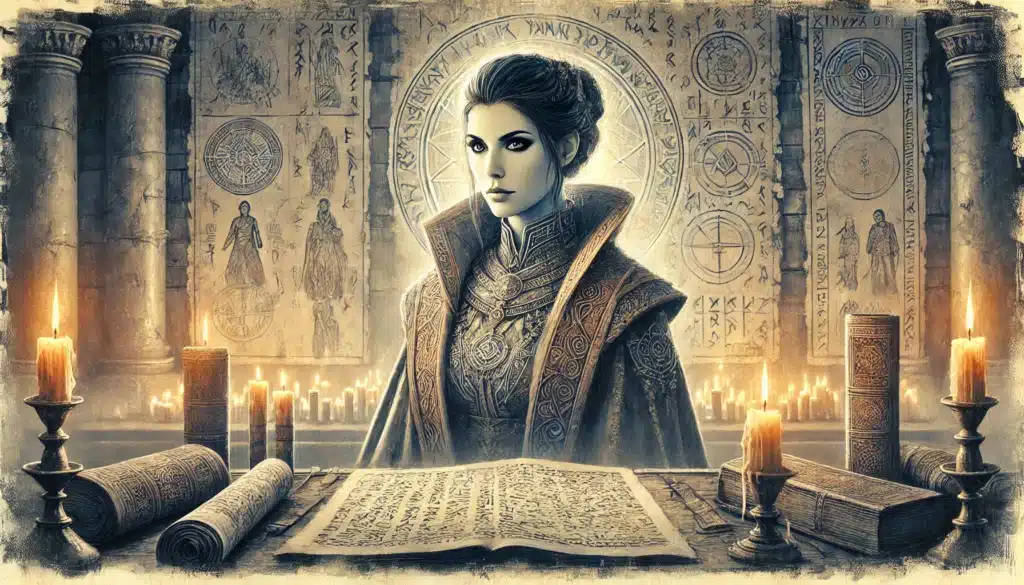
Final Thoughts on Creating Cultures and Histories
Deep worldbuilding is more than keeping timelines or lists of taboos straight. It is the art of making a world feel old, layered, and worth caring about. Every carefully-sketched culture and each tangled bit of history makes your setting a place where legends can be born, and memories can hurt or heal.
Perfection, ironically, is not the goal. The real magic comes with experiment and iteration—letting societies grow unevenly, borrow from each other, and sometimes spiral in directions you didn’t anticipate. Each adventure, each player choice, helps shape history anew. Every ruined city or half-forgotten ritual is an invitation for the party to write a new chapter.
Invite your players to become part of the world’s history, not just its observers. Let them renew faded customs, challenge broken laws, or rediscover fragments of myth. Allow your timelines, taboos, and traditions to flex and respond. A world that never changes is a dead world.
Most importantly, remember that good cultures do not merely exist in the background—they evolve through the tension, struggle, and agency of those living within them. A setting is not finished when your notes are full, but when it feels as alive and contradictory as a real society.
So, go forth and populate your worlds with societies that are flawed, vivid, and full of stories yet untold. Let every corner have something to teach, something to unsettle, and something to remember. The unforgettable cultures and histories you craft today will fuel adventure and emotion for every tomorrow at your table.

